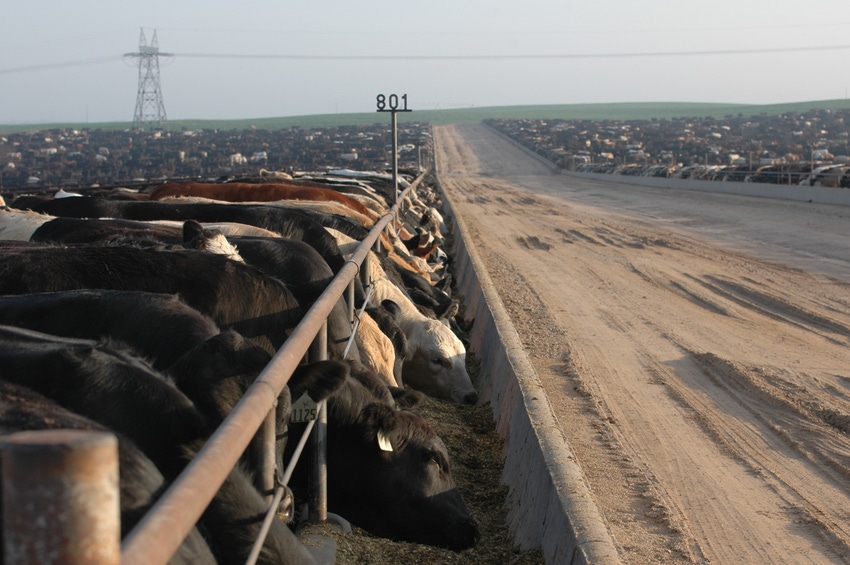Focus on consumer-based value, quality differences
For all of you striving to be above average on your next ranch report card, we have good news.
November 21, 2017

“While the trend of increasing quality is difficult to quantify, the combination of genetic improvement, formula pricing that includes premium price structures, and additional days of feeding due to lower grain prices will continue to drive U.S. beef quality higher,” says Don Close, Rabobank senior animal protein analyst. “The premiums in the U.S. are expected to increase relative to Choice, branded and Select classifications.”
That’s saying a mouthful when you consider how much of the nation’s federally inspected fed cattle supply already grades USDA Choice or higher — upwards of 80%. For instance, the last week of October, 76.8% graded Choice and Prime, according to USDA’s National Steer and Heifer Estimated Grading Report. Of the Choice-grading carcasses, 29.17% were USDA-certified in the upper two-thirds of Choice.
Moreover, a majority of those were offered for USDA beef program certification. There are upwards of 100 USDA-certified beef programs.
That’s besides USDA-verified claims that companies can attain through a USDA Process Verified Program (PVP) or Quality System Assessment Program (QSA). Things like non-hormone-treated cattle, and those never fed beta-agonists.
In other words, an ever-increasing percentage of beef can be differentiated by more than USDA quality grade. Consumers seek such differentiation and pay varying prices for the opportunity.
That’s why it was critical that USDA’s Grain Inspection and Packers and Stockyards Administration (GIPSA) withdrew its interim final rule (IFR) — also known as the Farmer Fair Practice rules — regarding the Packers and Stockyards Act and what is deemed unfair.
You’ll recall that these rules would have eliminated the need for someone to prove competitive injury in order to win a GIPSA lawsuit. Although that sounds warm and fuzzy, intended or not, the rules could have unhinged the alternative marketing arrangements that enable producers to receive more than an average price for more than average value.
In other words, rather than risk litigation, beef packers could have effectively been forced by law to pay the same money for all cattle, regardless of value.
“Collectively, the rules would have made it unnecessary for plaintiffs to show general harm to competition when challenging a packer’s decision to offer premiums to producers through established marketing agreements, going well beyond the statutory language, potentially opening the gates to lawsuits from disgruntled producers, and ultimately limiting marketing options and consumer choice,” according to a statement from the House Committee on Agriculture.
“The IFR attempted to renew a proposal rejected by Congress through four funding bills and directly circumvented the rulings of eight separate federal appeals courts,” according to a statement from the North American Meat Institute.
“The IFR would have greatly limited marketing agreements that allow the industry to meet consumer demand for various animal handling and production requirements, such as organic, grass-fed, raised without an antibiotic and others, limiting the availability of these products for consumers.”
Back in the good old days, when grocery stores featured generic (commodity) alternatives to brands of most every product and staple, there was little to no direct economic incentive to increase the inherent value of the cattle. The worst and the best got paid within a flea’s sneeze of one another, as the most valuable cattle subsidized the least valuable.
That’s the way it is in a commodity business, where cost is king. You squeeze every penny until Lincoln’s nose bleeds, and it takes one industry sector to lose in order for another one to win.
The mid-1970s was also about the same time beef began two straight decades of losing domestic consumer demand — to the tune of about 1% annually.
“Quality and other specifications are expected to become more paramount in marketing U.S. beef, both domestically and globally. Price spreads between quality types will create an opportunity for packers who are able to organize supply chains to align with product destination criteria,” say Close and Sterling Liddell, senior analyst of data analytics for Rabobank’s RaboResearch Food & Agribusiness, in that organization’s recent long-term outlook for the U.S. cattle and beef industries (projections through 2025).
In the report, Close and Liddell note that the domestic cattle business is fully mature and that U.S. consumers are already saturated with meat animal protein, or close to it. That means domestic growth rests on the shoulders of international demand. Similar to domestic consumers, international ones increasingly want U.S. beef quality and the opportunity to choose among verified differentiation.
“The trend of an increasing percentage of U.S. cattle rated Choice and Prime, combined with the development of international demand for quality, is likely to increase the spread between commodity, high-quality and ultra-high-quality beef,” say Close and Liddell.
That’s great news for anyone who aspires to be more than average.
About the Author(s)
You May Also Like





